Last chance to see Tutankhamun tomb treasures in the UK
The most eagerly-awaited blockbuster exhibition of the year has opened in London, with Tutankhamun: Treasures Of The Golden Pharaoh at the Saatchi Gallery as part of a world tour.
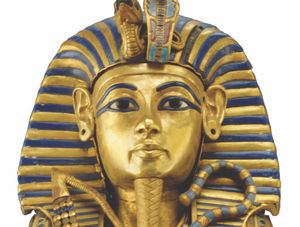
More than 150 priceless artefacts that belonged to the boy king of Ancient Egypt will go on show for six months at the gallery on Chelsea’s King’s Road.
London is the third of 10 cities on the worldwide tour, before the largest collection of King Tutankhamun’s treasures ever to travel out of Egypt returns to the Grand Egyptian Museum near the pyramids at Giza. The collection is then due to permanently remain at the new museum near Cairo.
The exhibition commemorates the centenary of the discovery of the young pharaoh’s tomb, an event which captivated the world and created a 1920s obsession with Egyptian style.
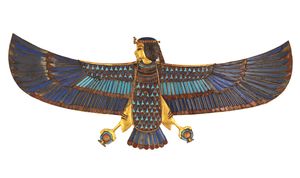
The display comes to London after breaking attendance records in Paris where 1.4 million visitors flocked to see the treasures at the Grand Halle de La Villette.
The last time a show of comparable size dedicated to Tutankhamun was held in the UK was at the British Museum in 1972 when 1.6 million visitors queued to gaze at the artefacts, including the famous golden mask. It caused such a sensation that the phrase ‘Tutmania’ was coined to describe its appeal. The most recent major exhibition was Tutankhamun and the Golden Age of the Pharaohs at the former Millennium Dome in 2007, and neither had as many artefacts as the new show.
The iconic golden death mask will not feature on this world tour, as it now remains in Cairo, but the 150 items will include 60 that are leaving Egypt for the first time. These are considered masterpieces of ancient craftsmanship.
Artefacts include a colossal statue of the ill-fated boy king, a pair of his gloves, a golden breast plate representing his life-force, life-sized guardian statues, a gilded wooden bed, a wooden armchair inlaid with ebony and ivory, and a pair of silver trumpets believed to be the oldest functioning musical instruments in existence.
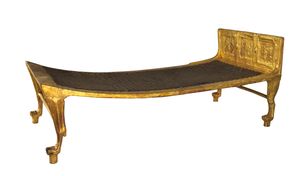
Tutankhamun was one of the last kings of Egypt’s 18th Dynasty, his brief reign some 3,300 years ago. Very little is known about his life because he was the son of Akhenaten, a pharaoh who was considered a heretic because he introduced a new religion that was later overthrown. Records mentioning him and his successors were destroyed by officials.
Around the age of 12, scholars believe, Tutankhamun married his half-sister, Ankhesenamun, Akhenaten’s third daughter by his wife Nefertiti. The couple had no surviving children, although mummified fetuses of two stillborn daughters were found in Tutankhamun’s tomb. Tutankhamun died shortly after an accident around 1326 BC, in the ninth or tenth year of his reign.
The legend of Tutankhamun captured imaginations worldwide when in 1922 his tomb was unearthed by British explorer Howard Carter and financier Lord Carnarvon, the only ancient Egyptian royal tomb ever found. The “Golden Boy,” who ruled for only a decade, was spectacularly provisioned for his afterlife – every object a marvel of beauty and intricacy.
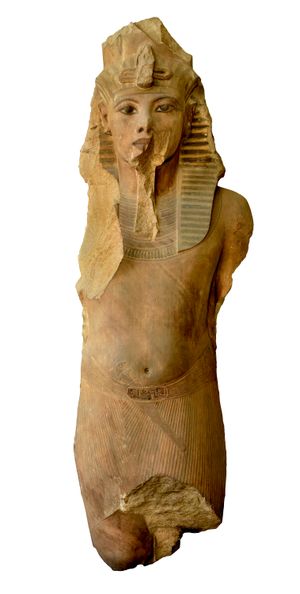
“To celebrate the 100th anniversary of the discovery of Tutankhamun’s tomb, Egypt is sending 150 masterpieces to tour all over the world. Please see them, visit them, before they return back to Egypt forever,” said Dr Mostafa Waziry, Secretary General of the Ministry of State for Antiquities in Egypt.
The ancient Egyptians believed that death was also a rebirth and visitors will travel through nine immersive galleries that incorporate digital content alongside the original treasures.
John Norman, managing director of IMG Exhibitions, said: “Nothing can replace the unique power of standing in front of an authentic object rooted in ancient history. This unprecedented collection transports visitors to Ancient Egypt where they accompany Tutankhamun on his journey to the afterlife in his quest for immortality. Visitors follow the king to the underworld to join Ra, the sun god and creator of the world, to meet the striking gaze of the life-sized statue that once stood guard over his burial chamber.”
Archaeologist Dr Zahi Hawass said: “We are nearing the centennial of the most significant archaeological discovery of our time. On November 4, 1922, Howard Carter with a team of mostly Egyptian workmen uncovered the first hint – a single stair step leading down into the rocky foundation below. It was soon evident that beneath the sand and rock lay treasures beyond imagination, lying in wait in the dark for thousands of years to tell the story of the golden age of Egypt and the boy king history nearly forgot.
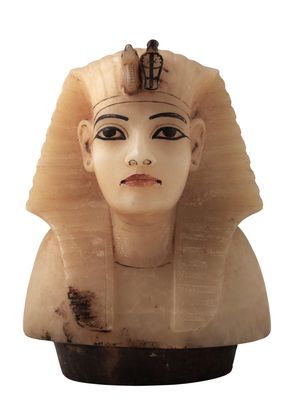
“We also hope this exhibition rouses the curiosity of people from all corners of the world to learn more and to come experience the full collection of Tutankhamun – among many other significant rulers and works – at the new Grand Egyptian Museum.
“Also, I am excavating in the Valley of the Kings. Next to the tomb of Tutankhamun, I am searching for the tomb of Queen Nefertiti and Queen Ankhsenamun, the wife of Tutankhamun.
“The most important news I have to convey is that, probably before the end of 2020, we will be able to announce the most exact cause of death of Tutankhamun.”
Tickets are available in price bands for peak and off-peak with concessions for seniors and children. The exhibition will be open daily from 10am to 6pm with last entry at 4.30. For further details see tutankhamun-london.com or call 0800 988 4440.





